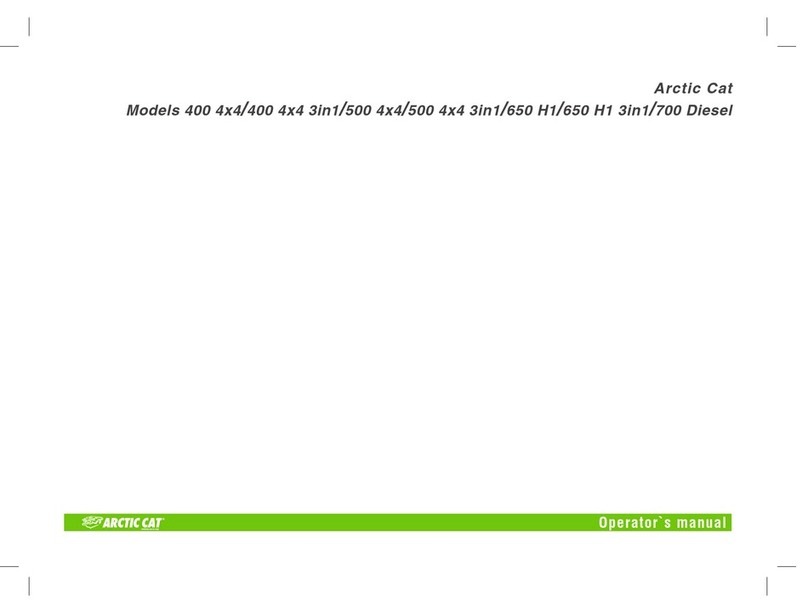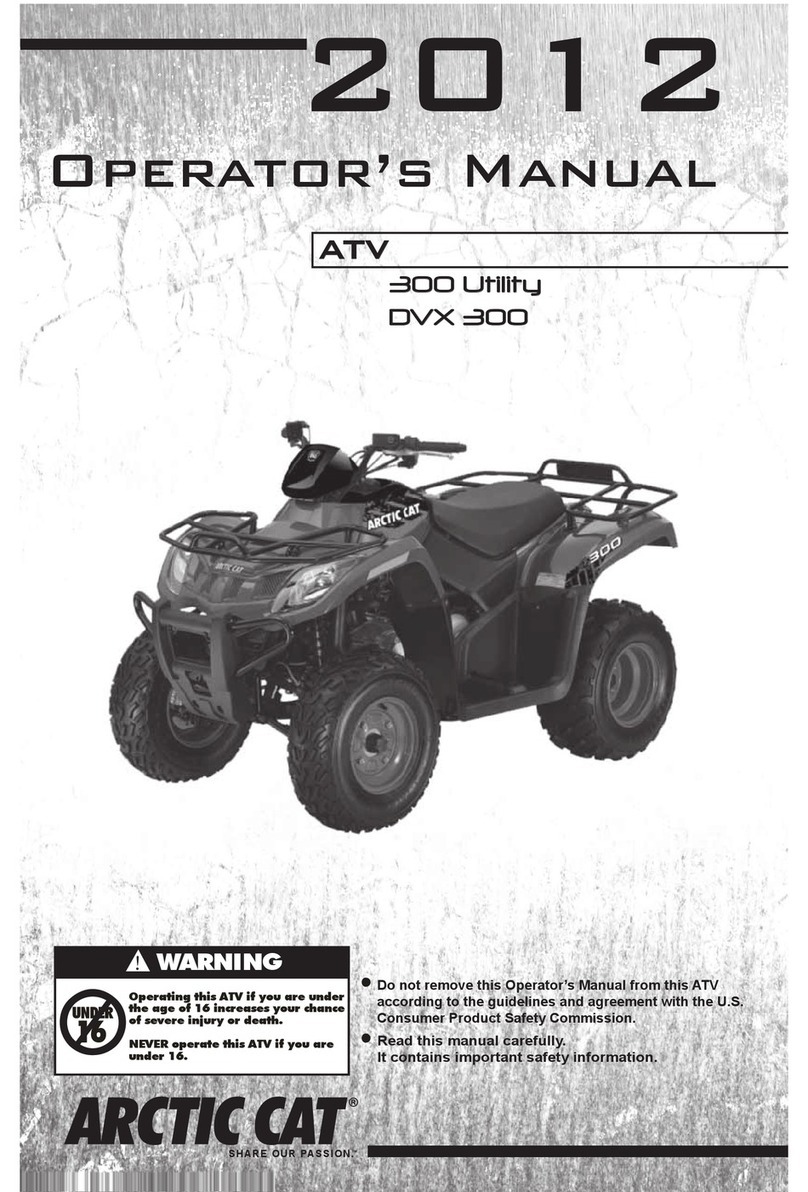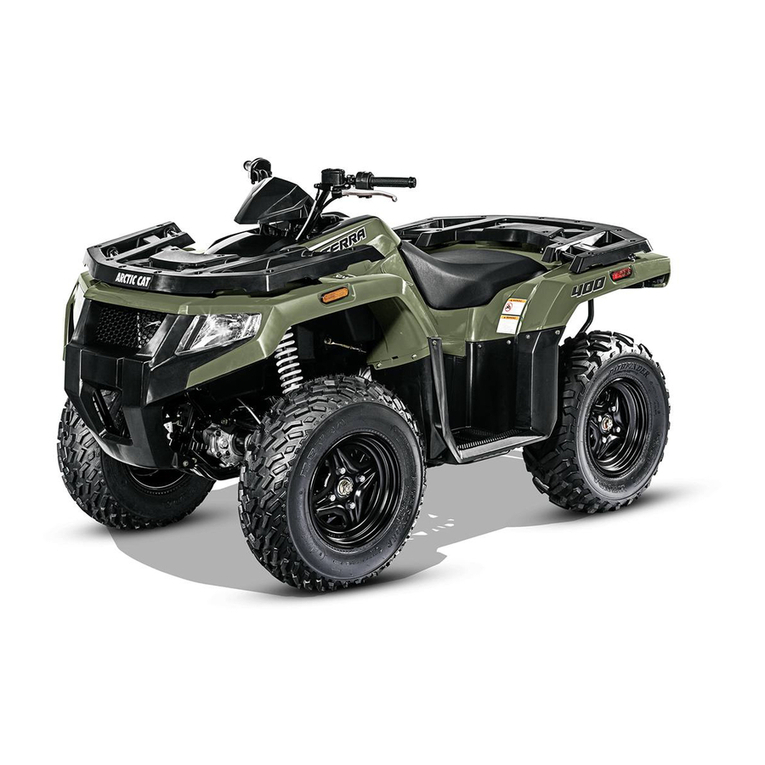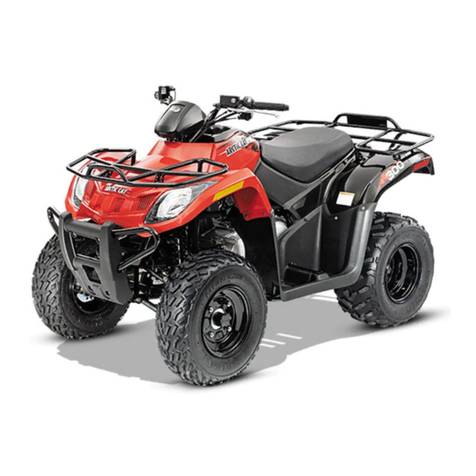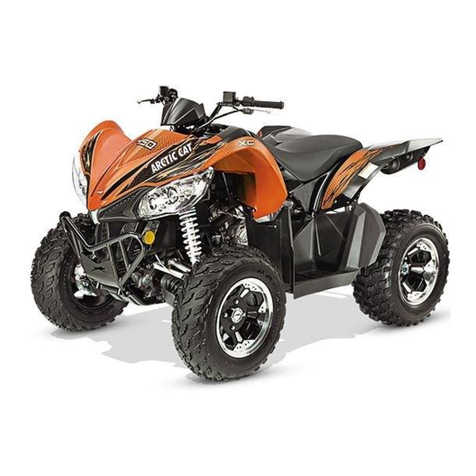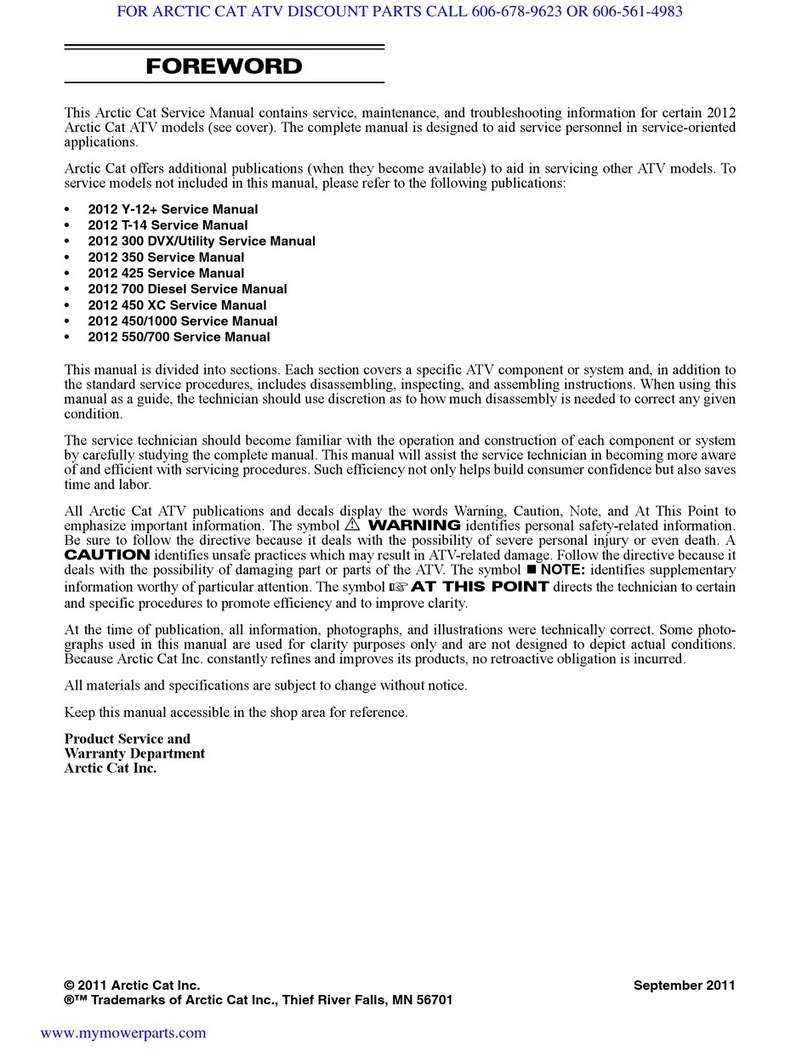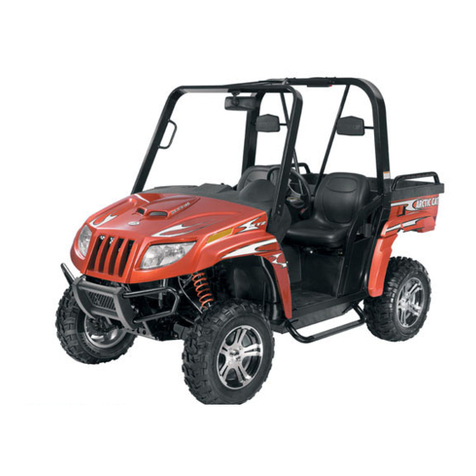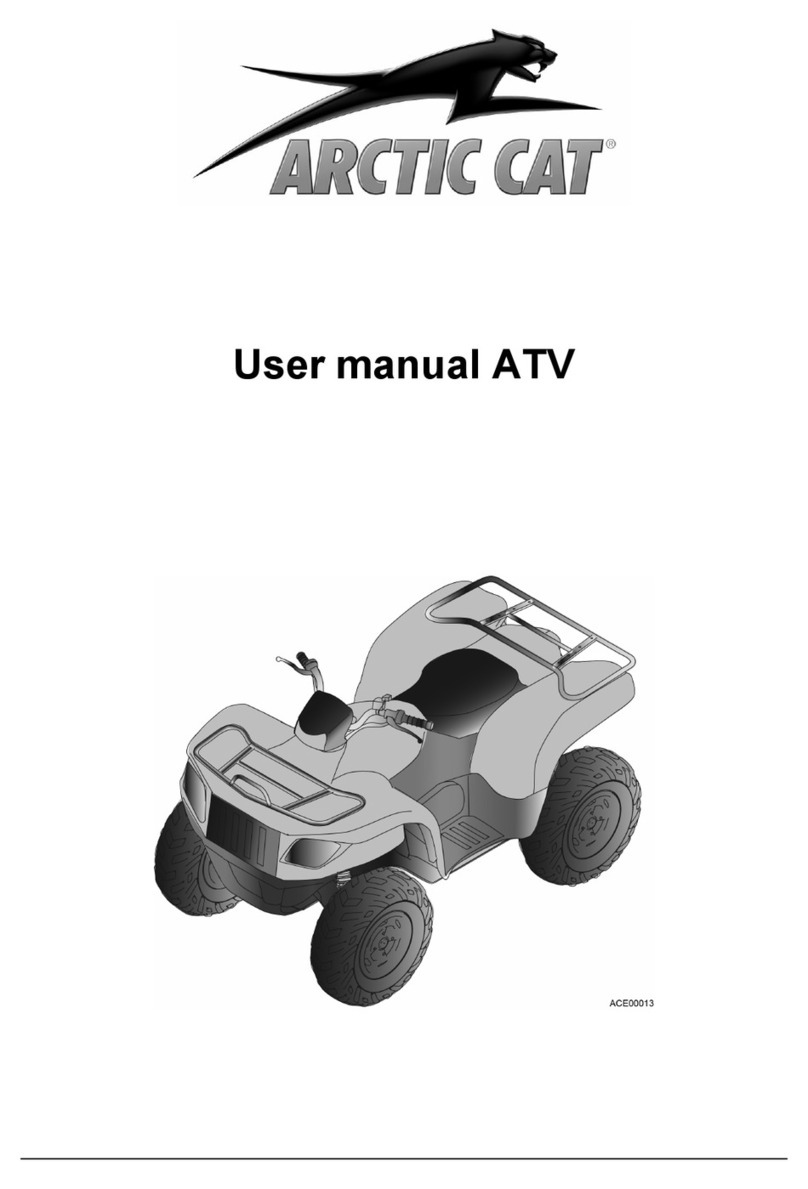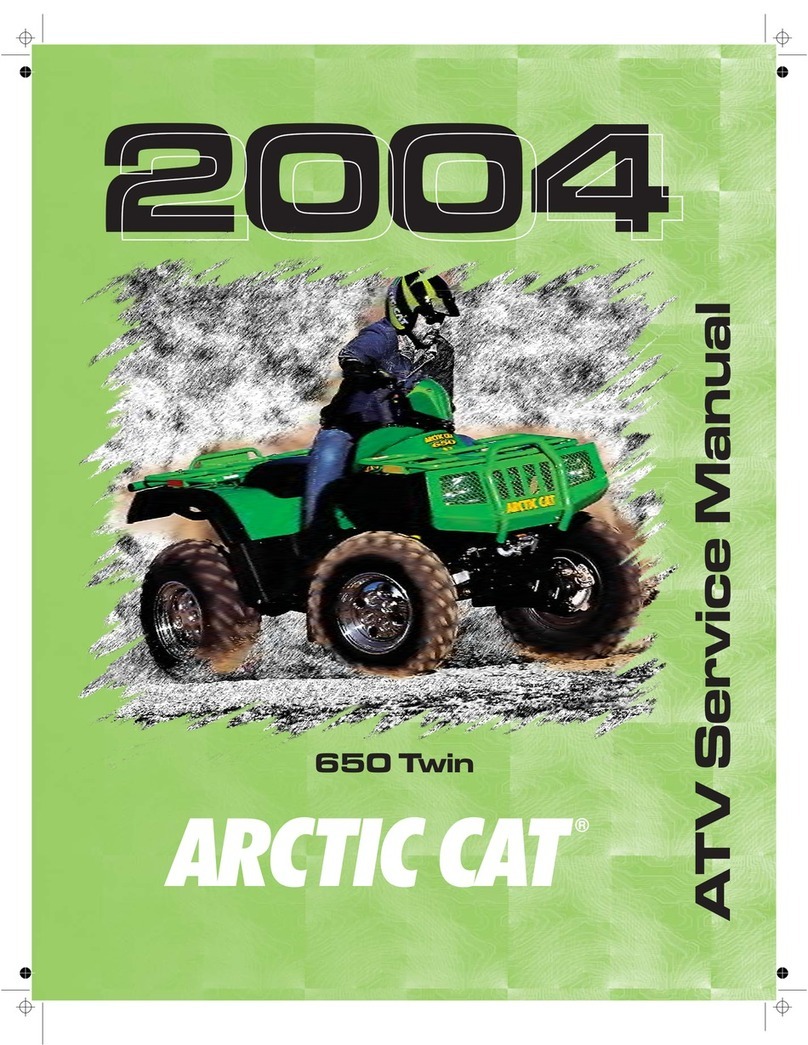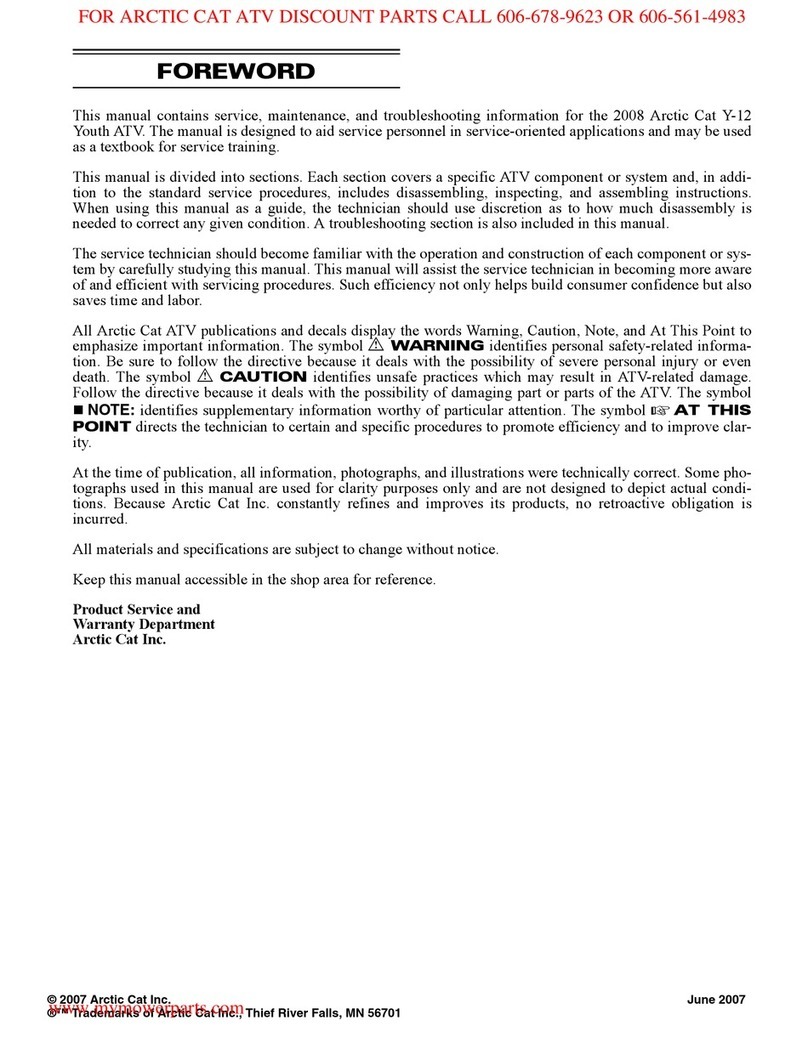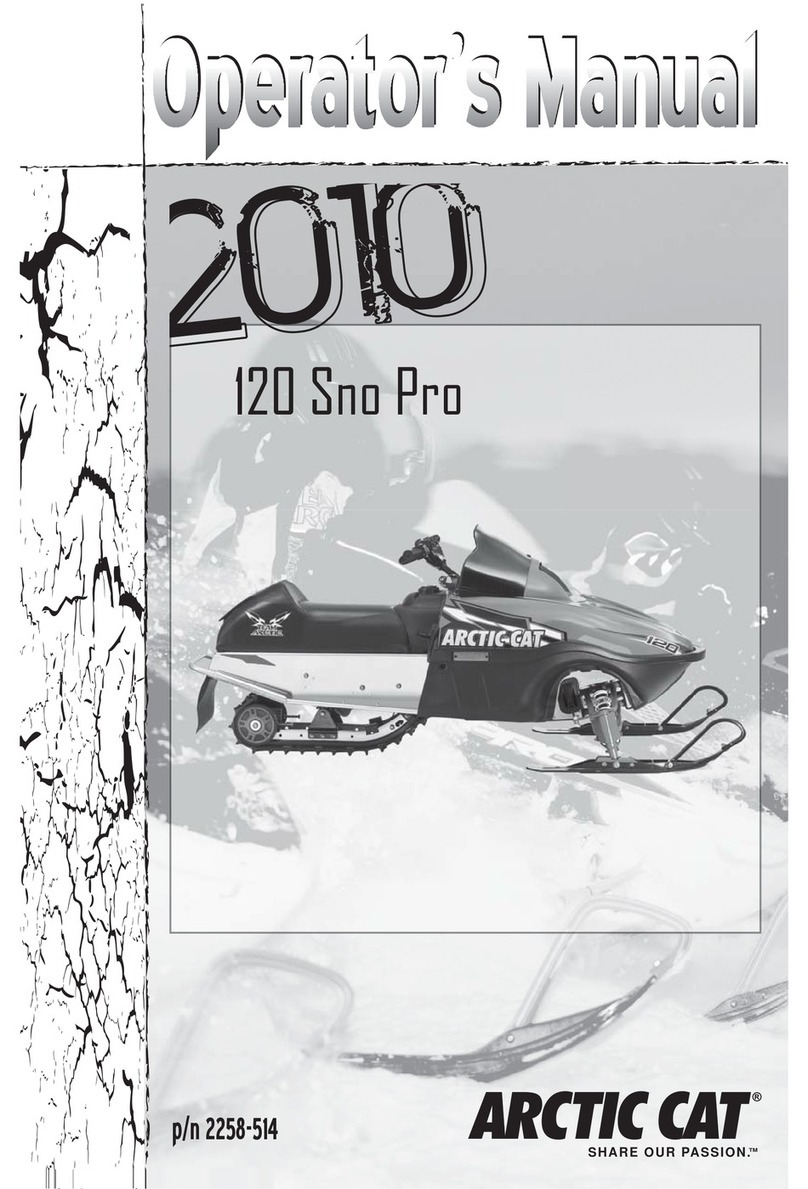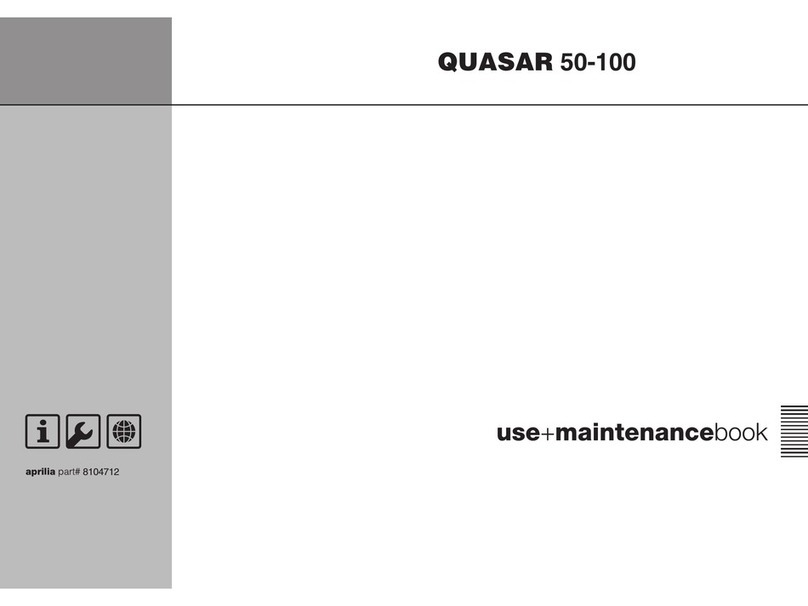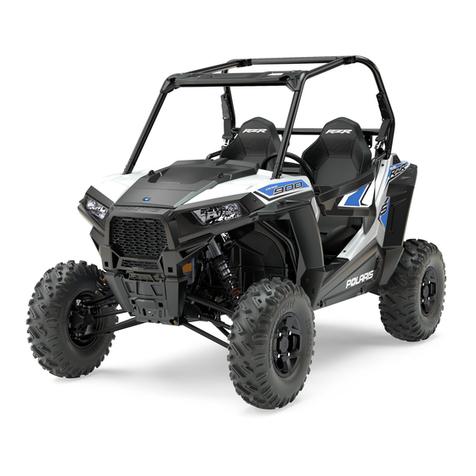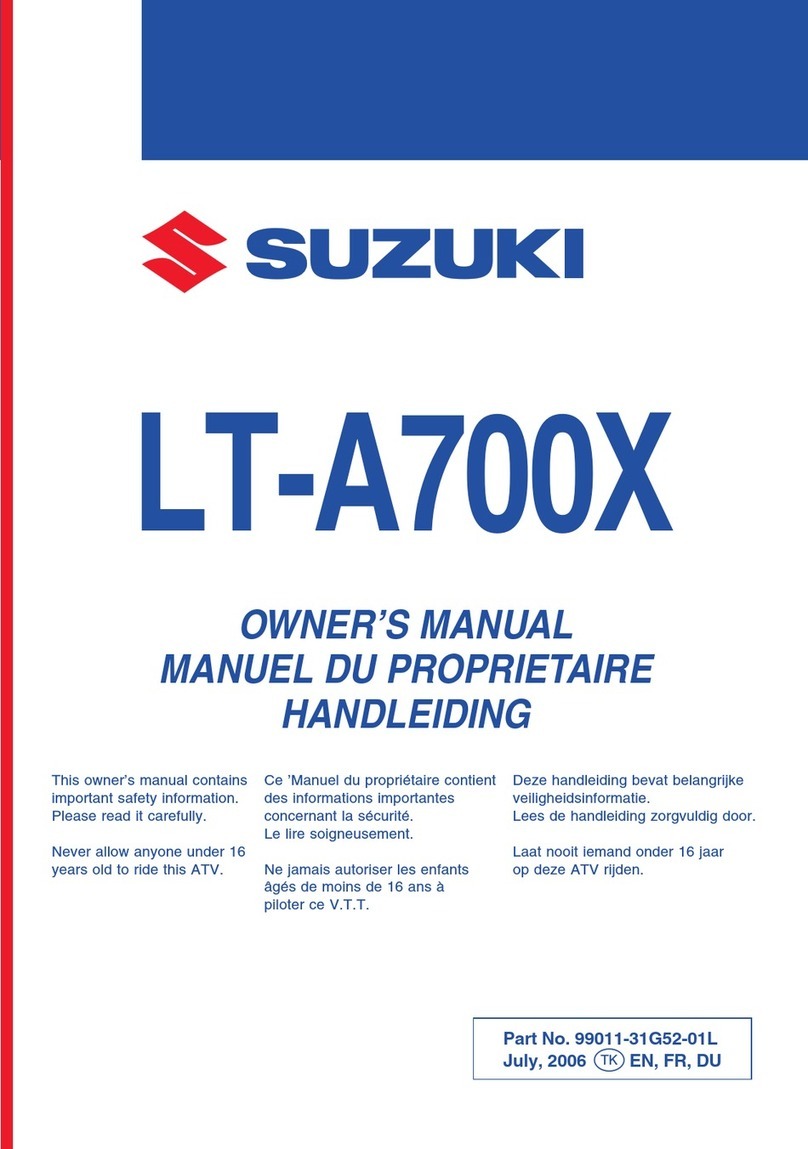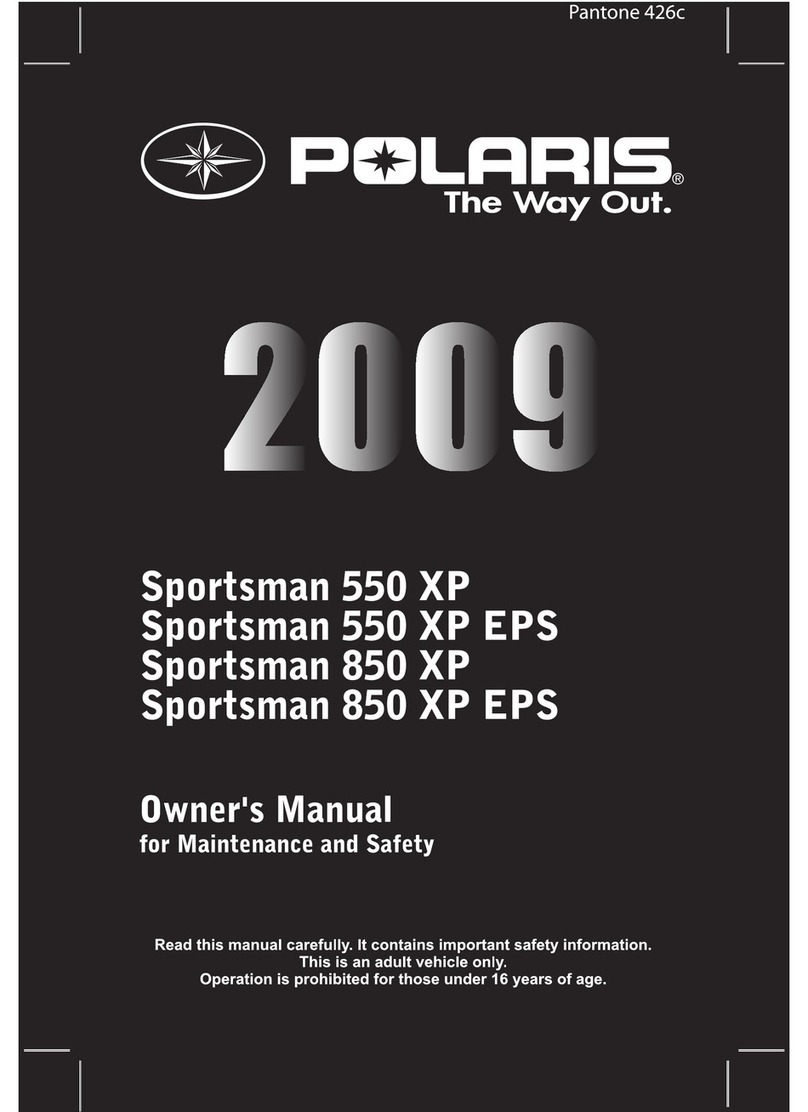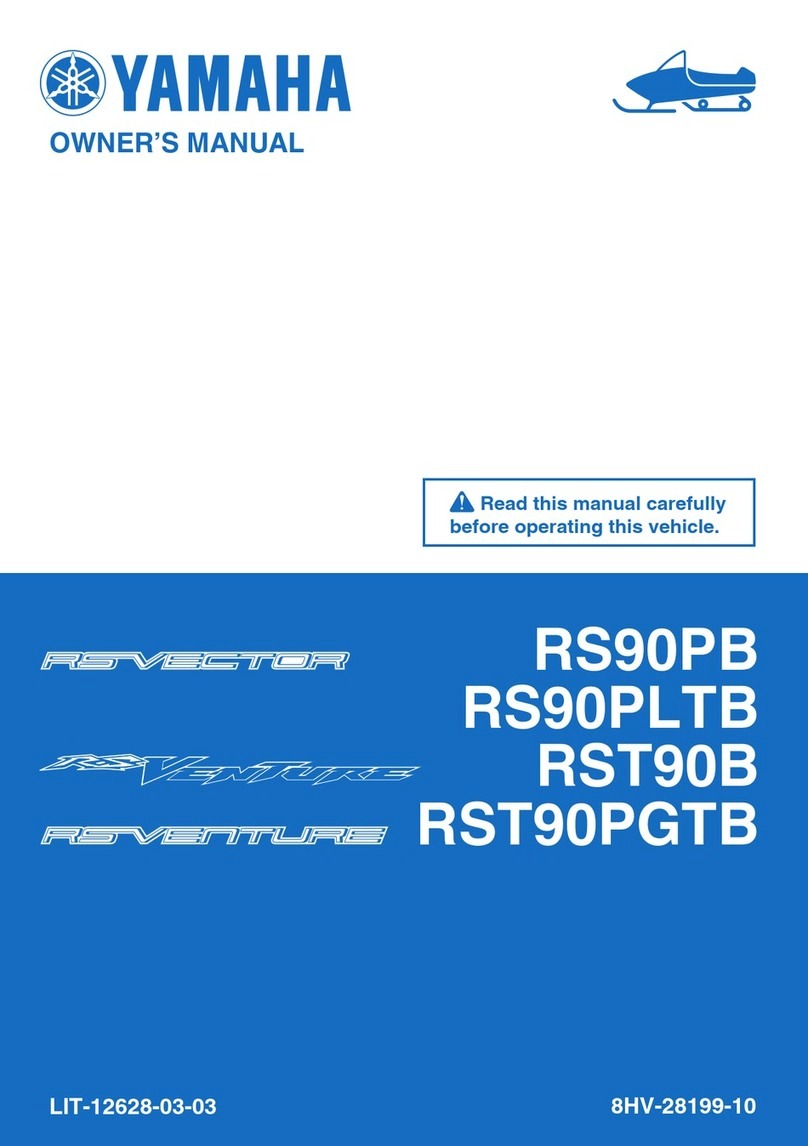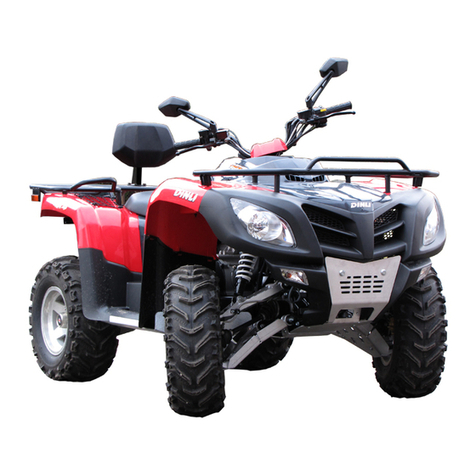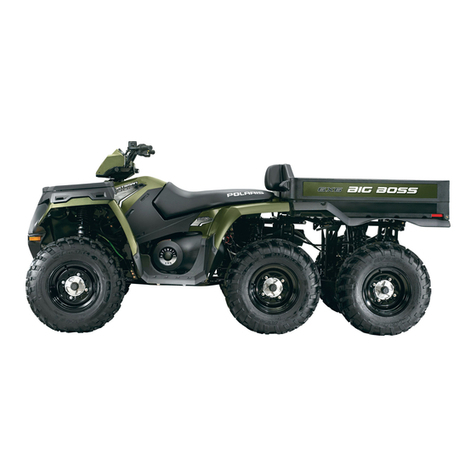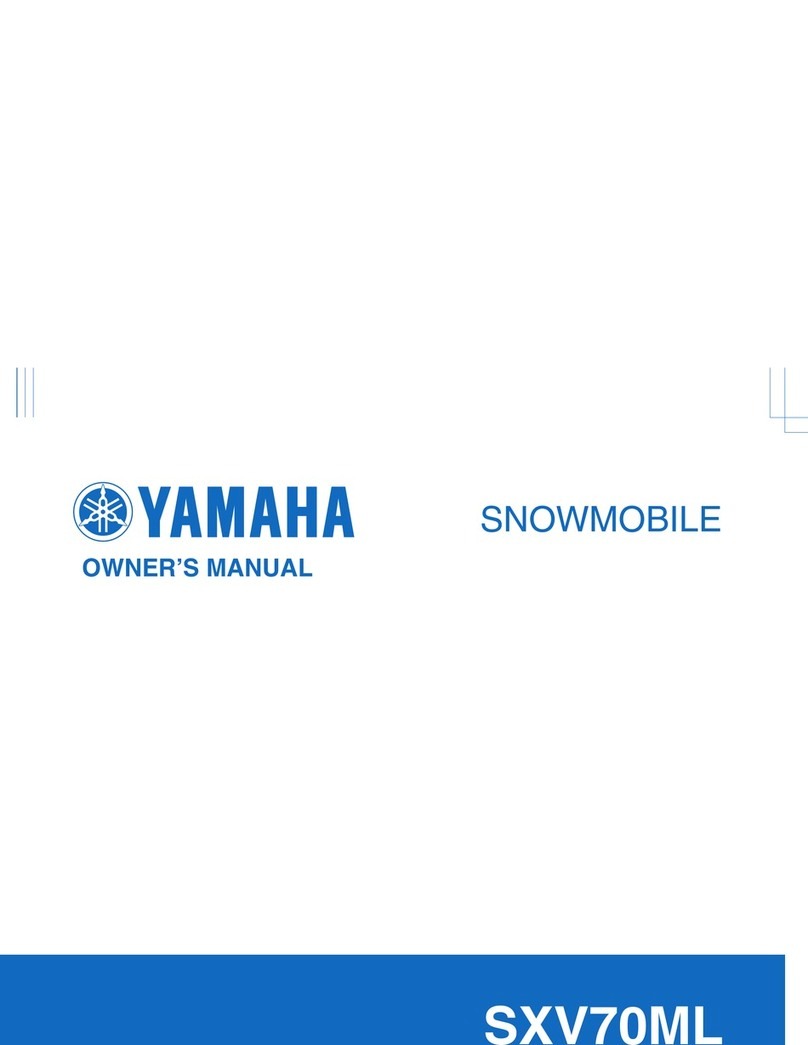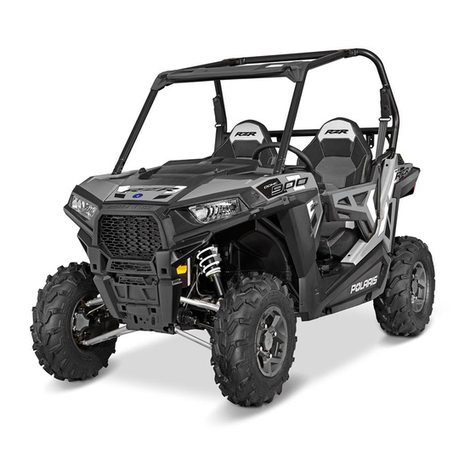
2-3
2
Lubrication Points
It is advisable to lubricate certain components periodi-
cally to ensure free movement. Apply light oil to the
components using the following list as reference.
A. Throttle Lever Pivot/Cable Ends
B. Brake Lever Pivot
C. Parking Brake Cable Ends
D. Choke Cable Upper End
E. Reverse Selector Cable End
F. Idle RPM Screw (Carburetor)
G. Rear Brake Pedal Pivot
Battery
The battery is located under the seat.
After being in service, batteries require regular clean-
ing and recharging in order to deliver peak perfor-
mance and maximum service life. The following
procedure is recommended for cleaning and maintain-
ing a sealed battery. Always read and follow instruc-
tions provided with battery chargers and battery
products.
1. Remove the battery hold-down; then disconnect
the battery cables (negative cable first).
2. Remove the battery from the battery compartment;
then thoroughly wash the battery and battery com-
partment with soap and water.
NOTE: If battery posts, cable ends, or the bat-
tery case has a build-up of white/green powder
residue, apply water and baking soda to neutralize
acid; then flush off with warm soapy water.
3. Using a wire brush, clean the battery posts and
cable ends removing all corrosive buildup.
Replace damaged cables or cable ends.
4. Using a multimeter, test the battery voltage. The
meter must read at least 12.5 DC Volts for a fully
charged battery.
NOTE: At this point if the meter reads as speci-
fied, the battery may be returned to service (see
step 8).
5. If the meter reads less than specified voltage,
charge the battery using the following guidelines.
A. When using an automatic battery charger,
always follow the charger manufacturer’s
instructions.
B. When using a constant-current battery charger,
use the following Battery Charging Chart.
NOTE: If the battery voltage is 11.5 DC Volts or
less, some chargers may “cut off” and fail to
charge. If this occurs, connect a fully charged
booster battery in parallel (positive to positive and
negative to negative) for a short period of time
with the charger connected. After 10-15 minutes,
disconnect the booster battery leaving the charger
connected and the charger should continue to
charge. If the charger “cuts off,” replace the bat-
tery.
6. After charging the battery for the specified time,
remove the battery charger and allow the battery to
sit for 1-2 hours.
7. Connect the multimeter and test the battery volt-
age. The meter should read at least 12.5 DC Volts.
If the voltage is as specified, the battery is ready
for service.
! WARNING
Anytime service is performed on a battery, the fol-
lowing must be observed: keep sparks, open flame,
cigarettes, or any other flame away. Always wear
safety glasses. Protect skin and clothing when hand-
ing a battery. When servicing battery in enclosed
space, keep the area well-ventilated.
! CAUTION
Do not remove seal strip.
! WARNING
Battery acid is harmful if it contacts eyes, skin, or
clothing. Care must be taken whenever handling a
battery.
! CAUTION
Never exceed the standard charging rate.
! WARNING
An overheated battery could explode causing severe
injury or death. Always monitor charging times and
charge rates carefully. Stop charging if the battery
becomes very warm to the touch. Allow it to cool
before resuming charging.
Battery Charging Chart (Constant-Current Charger)
Battery Voltage
(DC)
Charge
State
Charge Time Required
(at 1.5-2.0 Amps)
12.5 or more 100% None
12.2-12.4 75%-99% 3-6 hours
12.0-12.2 50%-74% 5-11 hours
11.0-11.9 25%-49% 13 hours (minimum)
11.5 or less 0-24% 20 hours (minimum)
Back to TOC Back to Section TOC Next
Back
FOR ARCTIC CAT ATV DISCOUNT PARTS CALL 606-678-9623 OR 606-561-4983
www.mymowerparts.com

